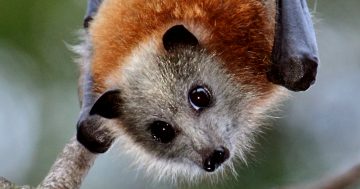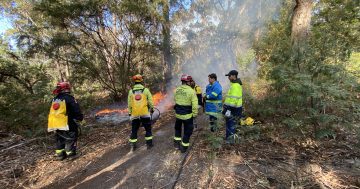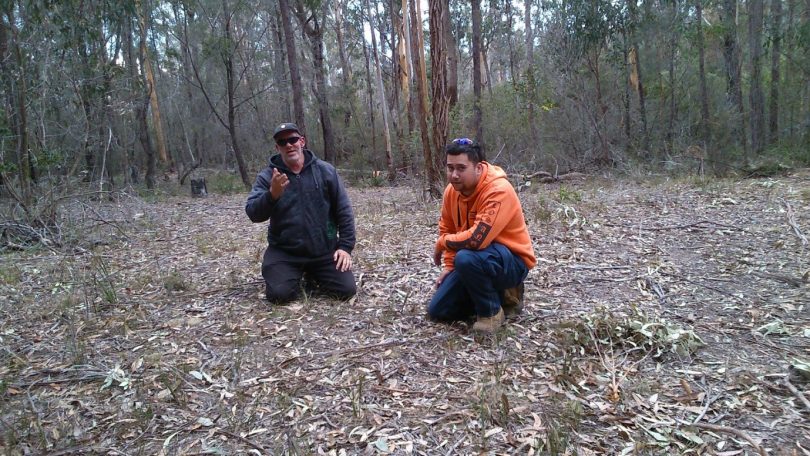
Bega Local Aboriginal Land Council team members Kelvin Howarth and Peter Dixon service a fox control site on Aboriginal land at Wallagoot. Photo: Supplied.
Traditaonal owners have stepped in on the ongoing environmental battle with a European pest, saving the lives of small native animals each night.
The Bega Local Aboriginal Land Council (Bega LALC) has just completed a broad scale fox control program driven by helping bring back small native mammals on over 1,000 hectares of Aboriginal land between Tanja and Merimbula.
“The fox population in our Bega Valley coastal forests is huge and out of control. Hundreds of hungry foxes kill small native mammals and reptiles every single night,” says Bega LALC CEO, Glenn Willcox.
Foxes hunt, kill and eat their prey daily, and this hunting pressure increases when there is a litter of fox-cubs to be fed.
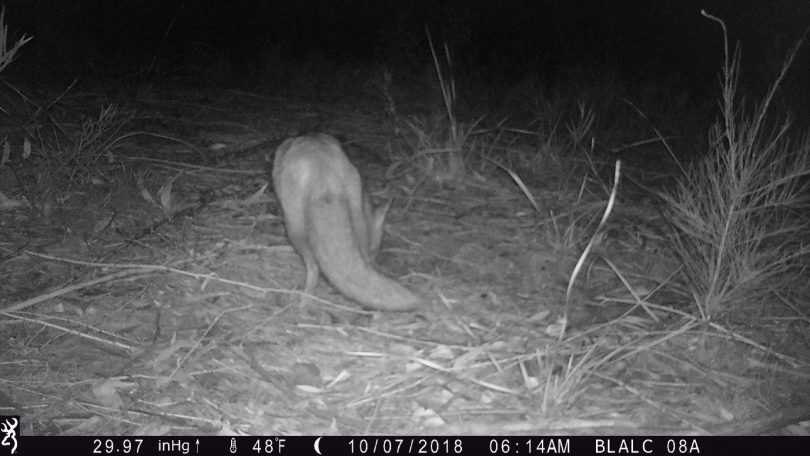
Fox taking a bait, captured on Bega LALC camera trap. Photo: Supplied.
The removal of up to 122 foxes from forested Aboriginal land, during targeted sweeps of 12 coastal properties in Spring last year and again in Autumn 2019, has potentially saved hundreds of small native animals from being killed and eaten.
This project saw Bega LALC crew members, including Peter Dixon, work on Country aiming to bring back and protect small mammals, so they can play their role in making the forest healthy again.
“Small marsupials like Potoroos, Antechinus and Bandicoots, as well as lizards and frogs, are very vulnerable to foxes and we want to protect these important creatures on our land.” Mr Dixon says.
The project saw crew members laying fox baits as well as monitoring fauna activity using camera traps.
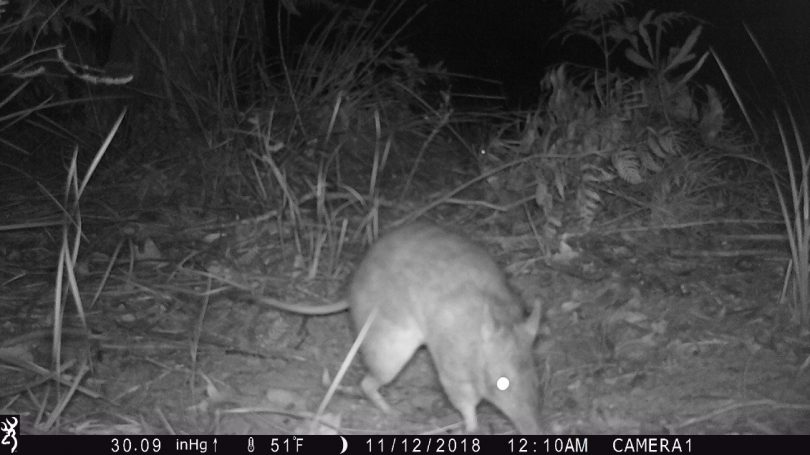
Bandicoot captured on a Bega LALC camera trap. Photo: Supplied.
Removing foxes from the locality, even for a short while, acts to reduce the pressure on native prey animal populations and supports them to carry out their important ecological functions and to complete their life cycle.
For example, Potoroos are small marsupials who dig up native truffles for food, and help to spread the truffles’ spores for the benefit of native trees, which need the underground fungi in order to take up nutrients via the tree roots.
“Unfortunately, the local fox population can quickly recover, as new foxes are constantly on the move seeking new territory; so this work needs to be ongoing” Mr Dixon says.
The project was initially funded by the Australian Government’s National Landcare Program.
“Working in partnership with South East Local Land Services (LLS) and with support from other agencies and local organisations has helped make it a success,” Mr Wilcox says.
“It has built the Bega LALC Team’s capacity to run a professional broad scale pest animal control program. We now look forward to tendering to do contract fox control work on public land in the future.
“Fox control work has to go on at a broad landscape scale to protect our small native animals. We are appreciative of additional funding from LLS to continue this work and consolidate the project’s results during Spring this year.”
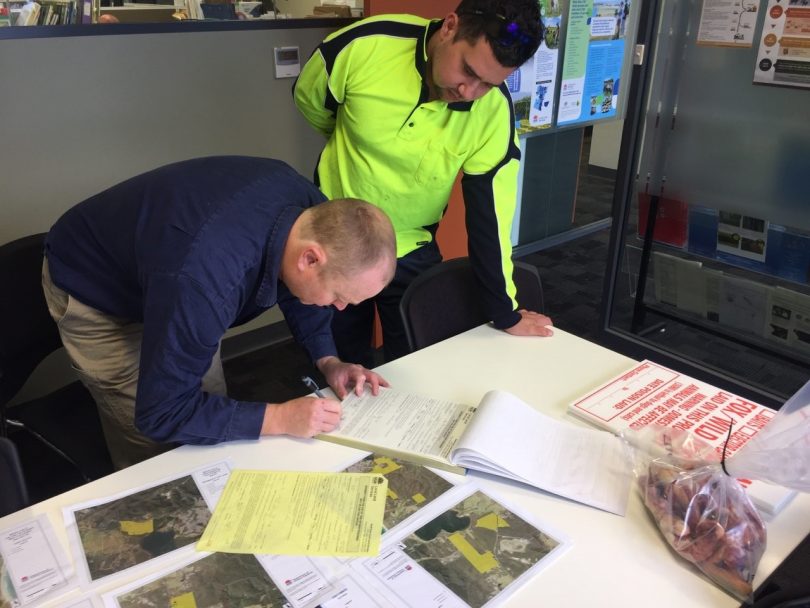
Peter Dixon and Dan Biddulph (LLS) discuss plans for the Bega LALC’s Fox Control project. Photo: Supplied.
Biosecurity Officer with South East Local Land Services Dan Biddulph adds, “It is great to see the Bega LALC, a large land manager within the Bega Valley conducting fox control on their lands.”
“We encourage all land managers to get involved with fox control as any safe-haven for foxes is a threat to native fauna. Control activity like this helps native fauna in the area and benefits the wider community at the same time.”







